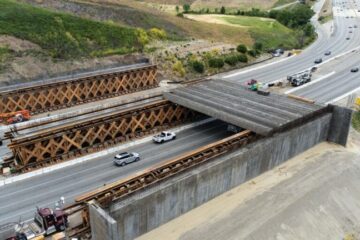Groups hard at work, clearing trails
Thousand Oaks is surrounded by 15,000 acres of open space that includes about 100 miles of hiking trails. Keeping the rustic paths clear of growth and debris isn’t an easy job, according to Glen Kinney, the supervising park ranger for the Conejo Open Space and Conservation Agency.
Source of this article – Thousand Oaks Acorn, May 25, 2006
By Sylvie Belmond
COSCA, the agency that oversees the trail clearance work, is a joint venture with the Conejo Recreation and Park District and the city of Thousand Oaks, Kinney said. The agency employs six rangers.
Fifty percent of the land owned by the CRPD is managed by COSCA, which was created to handle operations in most of the open space around Thousand Oaks.
Winter rains have resulted in overgrowth that’s quickly turning into unwanted brush that could quickly fuel a fire. The primary goal of trail clearance is to reduce the likelihood of wild land fires.
“This time of year we’re seeing a lot of growth of grasses, wheat and mustard plants that encroach upon the trails,” Kinney said. “The toughest part is the stuff grows very fast.”
Because there’s so much work to be done, the agency contracts out with Concerned Resource Environmental Workers (CREW), a nonprofit environmental group that reaches out to at-risk young people ages 14 to 21 and takes them to work on weekends.
Annually, 160 young people and 22 supervisors take part in various projects in partnership with groups such as the California Coastal Conservancy, Ojai Valley Land Conservancy, Local Fire Safe Council, Caltrans and COSCA. According to state officials, 60 percent of the kids stay two to three years, gaining valuable work skills and a stewardship ethic.
Although there isn’t really a deadline for trail clearance, COSCA tries to finish the job by June or early July, Kinney said. In order not to have to repeatedly clear the same area, the rangers and workers wait until the vegetation starts to dry before beginning their work, Kinney said.
It costs about $15,000 to $20,000 to clear the paths in local open spaces. These figures don’t include hazard reduction, such as weed abatement required by the fire department to create a 100-foot clearance between open spaces and nearby structures. About 90 acres that can’t be accessed by large vehicles will have to be cut by hand, Kinney said, and that could cost up to $130,000.
Unlike trail clearance, there’s a June 1 deadline for hazard reduction, and the department will also use a subcontractor for that work.


